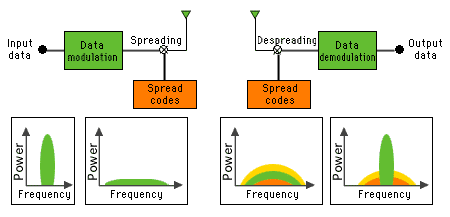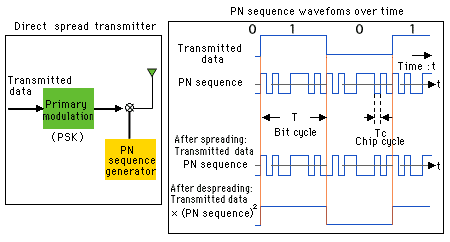Multiple Access -5.Principles of DS-CDMA
In the DS-CDMA system, two-step modulation and demodulation are logically conducted for both transmission and reception. First, the transmission side conducts the primary signal modulation and creates special waveforms called a PN series, which is then transmitted via broadband spectrum spread. As the reception side also receives communications signals other than the required signals, it restores the base-band waveform by restoring only the required signals to the original primary modulated signals by reverse-spread using the same spread codes as those on the transmission side.
The PN series, which is often used as the code series to spread the primary-modulated signals, can be considered as pseudo-random strings consisting of plus 1 or minus 1. It is always possible to regenerate the original signal from the extracted spread signals by reverse-spread, because the same PN series multiplied twice yields the original signal (i.e., 1 x 1 equals 1 and (-1) x (-1) equals 1).


Principles of DS-CDMA
![]() Created 1999/03
Created 1999/03
